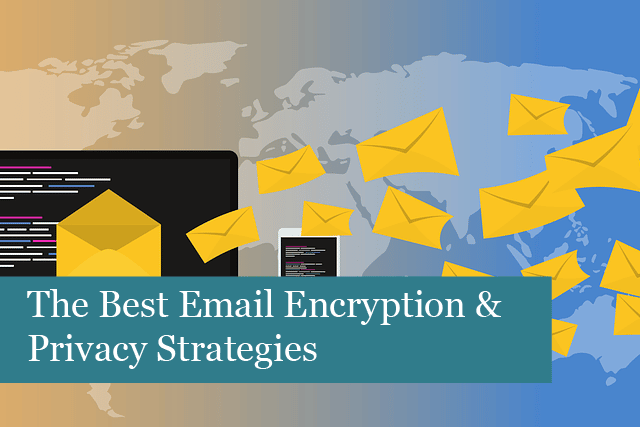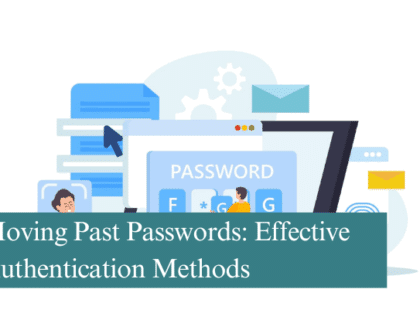
Has your company had trouble promoting email encryption and privacy policies and strategies at the office? If so, you’re not alone. Most businesses realise the most effective email security strategy is one that employees use!
However, employees may ignore or forget company email policies, and some don’t want to deal with the extra steps needed to keep their emails secure. Even so, there are some things you can do to enforce email security strategies on employees. These are transparent policies that work with data leak protection, email encryption, and more.
Best Practices to Promote Email Encryption and Privacy
We’ve put together a list of best practices you can use to help get employees on board with email encryption and privacy policies.
- Email Encryption
No one doubts the efficacy of email data protection and encryption. These are essential to keep confidential business data just that—confidential. However, some employees may feel this is another obstacle that makes it harder for them to get their jobs done.
What many employees don’t realise is that most governments require the encryption of confidential information that’s sent via email. Even so, a company must still consider its employees’ concerns when rolling out new email strategies. The key is that all email strategies should be transparent and easy to use.
Here are some important questions to keep in mind before implementing an email strategy:
- Will this technology support mobile employees?
- Does the tech integrate with our current email platform?
- Is data encryption automatic or do employees need to make a selection to encrypt their email?
- Is the technology smart? For instance, does the system identify and restrict confidential information with or without attachments?
- Employee Security Training is Essential
Employee security training is essential, but do employees really understand what they’re being taught? Education is another essential method to help employees understand the significance of email security. However, emails are still sent filled with confidential data and no encryption. What’s the problem?
The issue may be that employees do understand the importance of email security. They may just lack understanding when it comes to what email security looks like. They need to see examples of what happens when confidential data is released due to not following security policies.
Furthermore, employees must also be made to understand their professional and personal responsibility for emails sent without the proper security.
In addition, employees need to be encouraged to ask questions during the security rollout and afterward. And they need to have easy-to-follow procedures that explain how to keep data and emails secure.
Without the right education, employees will keep sending unsecured emails, leading to problems with compliance and regulation.
- Secure & Productive Email Features
Secure messaging must be easy and tie in with an employee’s normal job. If so, they’re more than likely to follow through consistently with email security and data protection methods. Most employees want to do the right thing and keep company data secure.
When implementing an email security policy, it’s necessary to keep a few things in mind, including:
- Employees need to have the ability to send secure emails from their phones and mobile devices.
- Employees need to feel confident they are not inadvertently making mistakes. When the system is well-done, it will reassure employees they are compliant, and there’s no need to take additional steps.
- Employees should never be left wondering if they successfully sent their secured email. When they’re sending a time-sensitive email, a timestamp should confirm and notify employees that their recipient has opened the email.
Email Best Practices
Here are some of the best practices to keep email safe and secure from hackers:
Use a Creative Password
Passwords are a sore point with everyone. No one, including employees, wants to learn yet another password. However, a strong password is one of the best defences against hackers.
Be sure to have a policy that requires all employees to create passwords with a mix of upper and lower letters. Experts recommend creating short phrases rather than words.
It’s imperative to avoid using personal data, such as hometown, school, birthdates, or any data that appears in your professional profiles.
Monitor Email Habits
Another way to keep emails more secure is by having each employee monitor their email habits:
- How often do they send emails?
- How many newsletters do they subscribe to?
- How much time do they respond to email threats outside of the organisation?
Watch for Phishing Emails
Phishing is still one of the most prevalent ways hackers gain access to our account information. Some emails may claim to be from a bank, while others may request you to send money.
Be sure to pay attention to tone of voice, spelling errors, and the email address. It’s possible to find indicators that show that email phishing is a problem.
Never access emails on public WiFi networks: public WiFi networks are those places it’s very easy to use when you’re away from work or home. However, these are not safe. The problem is criminals can easily syphon off data from your device without you even knowing. So, have a policy that doesn’t allow employees to open and send emails through a public WiFi connection.
Enforce the use of 2-factor authentication: also called 2FA, two-factor authentication adds another layer of security to protect company email accounts. Passwords, even if compromised, will not allow hackers to gain entrance to a business email account unless they also have 2FA information.
Don’t click on links within an email: hackers also love to fool people by making the email look like it was sent from someone within the company or a person that you may know. The email may include links or attachments the hacker wants you to click on. However, doing so can mean you’re taken to a fake website or that the email attachment tries to install malware on your device.
Log out of your email: this is one many people forget—it’s necessary to log out of your email account when you’re finished working, especially when on a company device. This same policy should also be used on personal devices.
Summing It Up
The most effective way to get employees to follow email security policies is through education and transparency. Employees need to understand their responsibilities with regard to company data and they must know what to look for to spot emails from hackers and other issues that could breach security.
What’s more, having an email security policy that naturally follows employees’ tasks is another effective way to ensure everyone stays serious and follows through with email security throughout the company.
Recommended Posts

Moving Past Passwords: Effective Authentication Methods
25th July 2025

Prepare for Windows 10 End of Life: What You Need to Know
18th July 2025

5 Ways Cloud-Based IT Solutions Can Empower Your UK Business
12th July 2025
